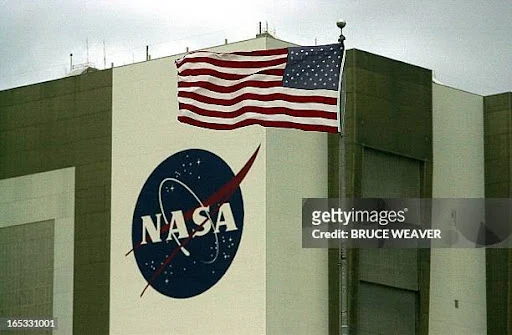Total Solar Eclipse 2024 - Where to Go? How to View It? & What to Eat?
On April 8, 2024, a total solar eclipse will travel through a large section of the United States, bringing everything to a halt for at least a few minutes as we collectively look up in awe. Not quite prepared for the eclipse? That's ok. Here's what you need to know about the 2024 eclipse, along with a few tasty snacks to enjoy during the event.
What Is a Total Solar Eclipse?
As Space.com explains, a solar eclipse occurs when "the moon is positioned between Earth and the sun and casts a shadow over Earth." The website added, there are different types of eclipses, including a total solar eclipse, where the sun is fully obscured by the moon; a partial eclipse, where the moon doesn't fully block out all the sun's light; an annular solar eclipse, where the moon is centered in front of the sun but doesn't cover the entirety of the surface (this is when a "ring of fire" is visible); and a hybrid solar eclipse, which Space.com calls "the rarest solar eclipse." It is is a combination of a total and annular eclipse and happens when the moon's shadow moves over the Earth.
How Often Does This Happen?
A solar eclipse only happens during a new moon phase, making it a truly rare event. According to NASA, there are two to five eclipses of the sun every year. However, each eclipse is only visible in a limited region. Additionally, NASA notes that "most eclipses appear partial from a single location even if the event is classified as total or annular." The path of totality usually covers "less than 1% of the Earth's surface." And, perhaps most shocking of all is that "on the average, about 375 years elapse between the appearance of two total solar eclipses from the same place. But the interval can sometimes be much longer!" But interestingly, the 2024 eclipse will pass through several communities in the U.S. that also experienced the 2017 and 2023 eclipses.
What's The 2024 Total Solar Eclipse Path?
The solar eclipse will enter the U.S. through Texas, making its way northeast through sections of Arkansas, Missouri, Kentucky, Illinois, Indiana, Ohio, Pennsylvania, New York, Vermont, and New Hampshire, before exiting the U.S. through Maine. You can see the exact path of totality and specific timings on science.nasa.gov website.
What Time Is the Total Solar Eclipse Happening and How Can I Watch?
Well,that all depends on where you'll be. The path of the eclipse enters North America by way of Mexico at approximately 11:07 a.m. PT and makes its way to the United States, beginning in Texas at 1:27 p.m. CDT. It exits the country in Maine at 3:35 p.m. ET. NASA has a tool that'll help you determine a more approximate time based on your ZIP code. And if you're nowhere near the path of totality, Time and Date will be streaming the event.
Are There Any Food and Beverage Offerings for the Eclipse?
Almost every company under the, well, sun, is getting in on solar eclipse mania. Sonic has already released its Blackout Slush Float, while Jeni's Ice Cream is releasing four new ice creams that each come with intergalactic backstories. And they are far from alone. Applebee's is offering its Perfect Eclipse Margarita at some locations, a drink it also served during the 2017 eclipse, and Oreo is releasing a Space Dunk Oreo Cookie. Restaurants and hotels along the length of totality are offering deals and parties too, so check in with the town closest to you to find more.
Is It Safe to Eat During an Eclipse?
There is a long-standing myth that you should not eat food prepared during an eclipse as it could be poisoned by radiation. NASA would like to put the kabosh on this.
"The basic idea is that total solar eclipses are terrifying and their ghostly green coronae look frightening, so it is natural to want to make up fearful stories about them and look for coincidences among events around you," NASA wrote in a blog post. "If someone is accidentally food-poisoned with potato salad during an eclipse, some might argue that the event was related to the eclipse itself even though hundreds of other people at the same location were not at all affected." So go ahead. Eat your snacks. You'll be fine.
How to Watch an Eclipse Safely
\There are still a few safety measures to consider during an eclipse. Namely, to only look at it using approved eyewear or a handheld solar viewer. Eclipse glasses differ from regular sunglasses as they are "thousands of times darker and ought to comply with the ISO 12312-2 international standard," NASA shared. See this list by Space.com for approved eyewear.
Additionally, NASA notes that photographers should absolutely not look at the sun through a camera lens, nor should viewers look at it through a "telescope, binoculars, or any other optical device while wearing eclipse glasses or using a handheld solar viewer — the concentrated solar rays will burn through the filter and cause serious eye injury."
But, if you don't have eclipse glasses, you can use an indirect viewing method via a pinhole projector, "for example, a hole punched in an index card," which projects the image of the sun onto any nearby flat surface. And frankly, this makes for a fun science experiment anyway. Need more? See everything you need to know about this eclipse, and future eclipses, at science.nasa.gov. website

Comments
Post a Comment